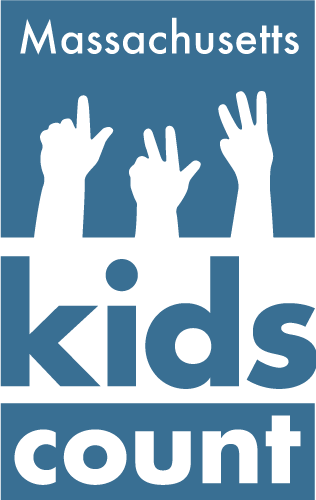The COVID-19 pandemic has created both a health and economic emergencies in Massachusetts. To help address these crises, the bill just signed by the Governor—referred to as “the ARPA bill”—includes close to $4 billion in spending to be used over the course of the next several years. It will support crucial investments in affordable housing, infrastructure projects, local public health, support for the state’s workforce, expansion of mental health services, and more.
These costs are funded by about $1.45 billion in funding from unspent FY 2021 revenue (the “surplus”) and about $2.5 billion out of a total of $5.29 billion in flexible state fiscal recovery funds sent to Massachusetts from the American Rescue Plan Act (“ARPA”) signed in March 2021.
Congress intended for states to target the ARPA fiscal recovery funds to begin repairing damage created by the pandemic, especially in the Black, brown, and low-income communities hardest-hit and most in need. Before enacting this bill, the Legislature held several virtual public hearings to allow community stakeholders to speak about some of these needs.
An important question about the bill as signed is how well are these billions of dollars going to address either the unequal impacts created by COVID or the social, health, or economic conditions that underlay these unequal impacts?
The two largest items funded in this law are $500 million to support the state’s unemployment insurance trust fund and $500 million for a new program to provide “premium pay” for certain frontline workers.
$500 million for the Unemployment Compensation Trust Fund
Unemployment is usually paid for by the businesses themselves through an assessment on business payroll costs. These assessments build up over time so that there is enough to pay for unemployment compensation during times of high unemployment.
Taking $500 million of our state’s surplus or federal COVID relief dollars to boost the total in the Unemployment Insurance Trust Fund is an across-the-board business-bailout using money that is desperately needed for continued pandemic recovery. And the trust fund boost is not a targeted way to spend state money to support the businesses that have been struggling during the pandemic.
On top of that, the Administration has not been forthright about the fiscal health of the unemployment trust fund. Does it even need an emergency infusion of state funds?
Targeted grants and loans — particularly for the small businesses in communities of color that have been hardest hit by the pandemic — would be a much more direct way to support struggling businesses in Massachusetts.
Perhaps even using a portion of this dollars to begin capitalizing a public bank would begin to increase access to capital for local businesses and community initiatives that have traditionally been left behind by lenders.
$500 million for the COVID-19 Essential Employee Premium Pay Program
The law also includes $500 million designated for one-time payments to essential frontline workers who were required to work in-person over the course of the pandemic. Of this total $40 million is set aside for state workers who were in-person between the winters of 2020 and 2021.
The payments would be between $500 and $2,000 per worker, and they would also be limited to in-person essential workers (to be defined) in households with incomes no more than three times the federal poverty limit ($65,880 for a family of three, $79,500 for a family of four).
The Legislature’s version of the legislation sets up an advisory council to help determine the specific eligibility and implementation guidelines for this proposal, but the Governor vetoed that provision. With or without an advisory group, there are serious equity implications that will result from the details in how this program is implemented.
The intent is presumably to direct this pay to the state’s lower income households that were hard-hit by COVID and whose household members bore the brunt of the risk of infection based on their work situation. However, the agency best equipped with access to information about Massachusetts residents’ income by household is the Department of Revenue. The program would then run the risk of missing out on a large segment of essential workers who are very low-income and therefore non-filers.
It’s also important to remember that the federal poverty level – even three times the poverty level – sets a very low threshold for family well-being in Massachusetts. A married couple with a small child with each parent working full-time at $16 an hour would be over the threshold for this premium pay cash bonus. Two married preschool teachers with a baby of their own who worked through the pandemic to help keep the economy running would likely be over the threshold.
Funding in Ch. 102 of the Acts of 2021
In keeping with Congress’ original plans for the uses of these funds, many of the line items funded in the bill include language explicitly stating that the money should be directed to “communities disproportionately impacted by the 2019 novel coronavirus pandemic.”
There is also a section that creates an “equity and accountability review panel.” This panel is responsible for setting up a tracking system to monitor how well the federal funds appropriated in this legislation are reaching communities disproportionately affected by the pandemic. This panel will also track whether “diverse businesses” receive contracts that flow from programs funded by the law.
In addition to the $3.6 billion funding newly-created line items included in the table below, there is an additional $404 million more distributed among existing state budget line items with funding “earmarked” (designated) for specific state and local programs and initiatives. These include environmental programs, local health and human services programs, housing programs, local cultural projects, education initiatives, and more.
The language in the law notes that the state would have until the end of Fiscal Year 2027 (June 30, 2027) to spend most of the total funding in the bill. Guidance from the U.S. Treasury notes that states must “obligate” (commit for spending) all the state recovery funds by December 31, 2024, and that there would be a two-year window to spend them.
| Funding Highlights from Ch. 102 of the Acts of 2021 | ||
|---|---|---|
| Line Item | Program Title | Amount |
| 1599-2020 | Homeownership Assistance | 65,000,000 |
| 1599-2021 | CommonWealth Builders Program | 115,000,000 |
| 1599-2022 | Rental Housing Production | 115,000,000 |
| 1599-2023 | Supportive Housing | 150,000,000 |
| 1599-2024 | Public Housing Maintenance | 150,000,000 |
| 1599-2025 | Local and Regional Public Health | 200,100,000 |
| 1599-2026 | Behavioral Health Workforce & Infrastructure Supports | 400,000,000 |
| 1599-2027 | Human Service Sector Workforce Supports | 30,000,000 |
| 1599-2028 | Hospital Support | 260,000,000 |
| 1599-2029 | Nursing Facility & Workforce Improvements | 50,000,000 |
| 1599-2031 | Environmental Infrastructure Grants | 100,000,000 |
| 1599-2032 | Water and Sewer, including combined sewer overflow | 100,000,000 |
| 1599-2034 | Marine Port Development | 90,000,000 |
| 1599-2037 | Workforce Investments | 107,500,000 |
| 1599-2038 | Vocational Infrastructure | 100,000,000 |
| 1599-2042 | Small Business Relief | 75,000,000 |
| 1599-2043 | Mass. Cultural Council Grants | 134,978,000 |
| 1599-2045 | Broadband/Internet Access | 50,000,000 |
| 1599-2049 | Youth-at-Risk Supports | 37,500,000 |
| 1599-2050 | Food Security | 44,800,000 |
| 1599-2055 | Dept. Elem. & Secondary Education HVAC | 100,000,000 |
| 1599-2056 | Education Supports | 105,000,000 |
| 1599-2057 | UI Trust Fund Support | 500,000,000 |
| Essential Worker Premium Pay | 500,000,000 | |
It is not yet determined how much of these programs will ultimately be funded from the FY 2021 surplus and how much will draw from ARPA State Fiscal Recovery Funds. That decision will likely be based on determinations by the Administration as to what meets eligibility rules for the funds. In any case, there is still approximately $2.3 billion in ARPA state fiscal recovery funds remaining for the Legislature to decide about.





